Running with the Bulls
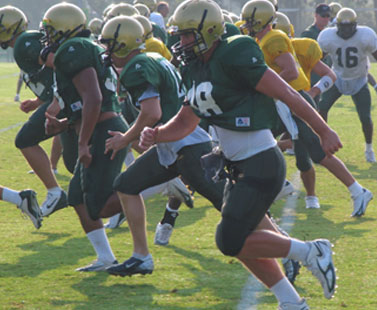
Meet the Team Physicians taking care of the USF Bulls
Updated October 23, 2007
They run to the deafening roar of the crowds…can break through the thickest sea of humanity… are always on the hunt for red. Pamplona, Spain may be famous for its running of the bulls, but Tampa has some famous bulls of its own – the USF Bulls!
And just like the “toros” in Spain, our Bulls hunt red – Scarlet Knights red, that is!
In what has been a record setting year for the team, the Bulls achieved the rank of No. 2 team in the country’s Bowl Championship Series (BCS) and despite a loss to Rutgers University’s Scarlet Knights on October 18th, continue on their quest for a major bowl. It remains a thrilling ride for the team and the doctors taking care of the most-talked-about bulls this side of the Atlantic.
“At any one time, you’ve got eleven guys on the field playing. You hope they all get up after every play! We have this unique opportunity to watch things happen up close and in real time”, says David Leffers, MD, the head physician for the Bulls – orthopedics.
The Bulls are taken care of by a cadre of USF Health physicians and athletic trainers. Of those, five MD’s specializing in Sports Medicine and Orthopedics take turns with the team at every game. They watch every move from the sidelines, hoping the Bulls “don’t need our services”. Half the docs zero in on orthopedics needs. The others focus on primary care.
Dr. Leffers has been the university’s team physician since 1984 – taking care of USF athletes long before the football program began. “The ball is the great magnet. Everyone follows the ball and we do too. That’s where the injuries are going to occur”, says Dr. Leffers.
The game in New Jersey’s Rutgers Stadium unfolded before a sell-out crowd of 42,000 fans. At 6 feet 5 inches tall, Dr. Leffers was easy to spot on the sidelines.
“I was a former athlete, so once an athlete always an athlete”, says Dr. Leffers who played football for Vanderbilt University. “The best part of my job is getting to know the kids. It’s nice when they win, but the best part is watching them grow and mature over the course of four years.”
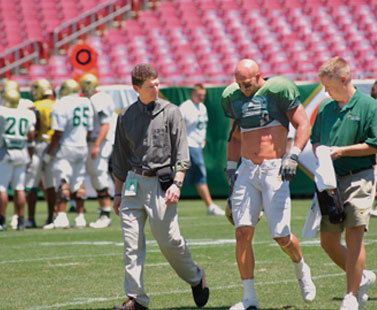
Dr. Eric Coris on the practice field in Tampa, FL
Talk on the side lines
Eric Coris, MD, was on the sidelines in New Jersey too. Dr. Coris is the head medical team physician for USF’s Athletics Department and the lead for the Bulls’ primary care.
“The reality is that we are all fans! We’re out there rooting for the kids that we get to know really well and we’re watching and enjoying the game, but at the same time we’re focused on the high velocity hits…the things that cause problems”, said Dr. Coris before heading to New Jersey.
“We’ll be thinking of possible bone and neck injuries. There are things we watch out for. One, you tell them (players) not to lower their head when they make a tackle. That’s where most cervical injuries happen. Some players will do that in the heat of the moment, but we constantly caution them…” says Dr. Coris.
“Players will ask me about fluids and electrolytes. They’ll ask me about symptoms they may be feeling”, says Dr. Coris describing some of the talk on the bench in between plays. “Studies have shown that some people sweat more than others and sweat more sodium. They’re losing electrolytes and those players tend to cramp more.” To help combat this on October 18th, Coris has identified a handful of players who’ll be getting intravenous fluids just prior to the game. “We’re more aggressive about electrolyte replacement than we’ve ever been”, says Dr. Coris.
The split
This time around, MD’s Charles Nofsinger, an orthopedic surgeon, and Michele Pescasio, a physician in Family Medicine, watched the big game from Tampa. All describe the same split personality experience at game time – the super FAN within vs. the serious physician on serious business. “Your attention is split”, says Dr. Nofsinger.
“There are certain patterns that you recognize that lead to injury. You’re looking for patterns that might tear an ‘ACL’ or ‘MCL’”, says Dr. Nofsinger, referring to the anterior cruciate ligament in the center of the knee and the medial collateral ligament located on the inside of the knee. “If you see one of the running backs get hit from the outside when he’s got his foot planted, that can lead to a tear.”
Somehow, brains packed with all the infinite possibilities of hits, sores and sprains, these traveling USF Health docs stay positive. They note there have been few serious injuries in the season thus far. “I have the best job in the world!” says Dr. Nofsinger. “I’m so keyed up at the games. It’s great to be a part of the team. It’s a wonderful environment to practice (medicine) in.”
Girl power!
Come game time Thursday, Dr. Michele Pescasio was trying to watch Bulls, Cowboys and Wildcats all at once! She served as the team physician for the Gaither High School Cowboys during their Oct. 18 homecoming game against the Wesley Chapel Wildcats. Dr. Pescasio and certified athletic trainer Vicki Kean provide year-round medical coverage for Gaither through the USF Health Sports and Athletic Related Trauma (SMART) Institute. But Dr. Pescasio planned to take a portable, battery-operated TV with her, so she could sneak peaks at the USF-Rutgers game and cheer on the Bulls between plays at Gaither stadium. “I’m sure I won’t be the only one there watching two games,” she said on the eve of the Oct. 18 game.
As the only woman physician on a male-dominated sports medicine team, Dr. Pescasio said she provides “balance” to the team physicians. While she’s just as likely to treat male as female athletes, she says some women athletes feel more comfortable speaking with a woman physician about certain medical conditions.
At USF games she stands front and center near the sideline benches watching for any signs of cramping, heat illness or concussion among players. As the shortest team physician (5 feet, 3 inches), she sometimes has to jockey for position with taller, heftier equipment personnel or athletic training staff when they inadvertently obscure her view of the field. “I tell them ‘Hey, you make a much better door than a window!’ or ‘You can look over my head.’”
“USF is a great environment for a team physician, because the coaching staff is very supportive of the medical team and makes the athletes’ health a top priority,” Dr. Pescasio said. “Some schools still operate with the philosophy of win at any cost. Our coaches still want to win, but if we say there’s a problem they won’t put a player back in the game at the risk of future injuries.”
Bulls’ back up team
Taking care of the Bulls begins well before the season’s first kick-off. “It’s really a year-round responsibility,” said Dr. Robert Pedowitz, MD, PhD, Chair of the USF Health Department of Orthopaedics & Sports Medicine. “Team physicians conduct preseason physical exams to screen and evaluate any physical problems before practice starts, manage injuries on the field, handle medical questions or concerns during season and off-season, and work closely with the athletic training staff and other health professionals to prepare the athlete for safe return to competition following an injury or illness.”
The team physicians also work with the Athletic Department staff and paramedics to plan and train for emergencies during competition and practice. “We’re responsible for making sure proper protocols are in place for a coordinated response whenever there’s a serious injury on the field,” said Dr. Pedowtiz. “We rehearse scenarios – like someone down with a head or neck injury – where very small mistakes can result in catastrophic consequences.”
Dr. Pedowitz credits USF Athletic Director Doug Woolard and his team, including associate director Barry Clements and Steve Walz, director of sports medicine (both of whom are athletic trainers), with helping forge a team approach to player care that integrates USF Health and USF Athletics. “Sports medicine is very well regarded at USF because of the leadership of our Athletic Director.”
In addition to the three orthopedic surgeons (including Dr. Pedowitz) and two primary care sports medicine physicians who lead the medical team treating the USF Bulls, the athletes have access to other USF Health specialists like neurologists, neurosurgeons and ophthalmologists if needed. “That’s the benefit of being part of a comprehensive multidisciplinary practice – we have the expertise and resources to take care of any injury the athlete may sustain,” he said.
Dr. Pedowitz wasn’t be running with the Bulls on Thursday night, but like the other team physicians his eyes were on every play, thinking bones, ligaments, and muscles. “I’ll watch the game at home on TV — with an eagle eye, of course!” he said.
Running with the Bulls, Pamplona style
Who knows, by the end of football season, the team docs may be screaming Olé – just like the bull runners in Spain!
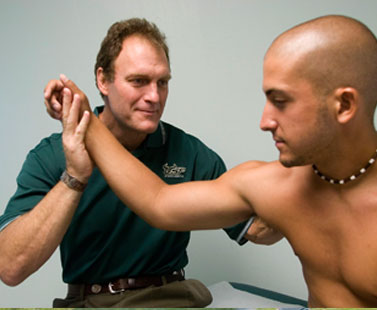
Dr. David Leffers
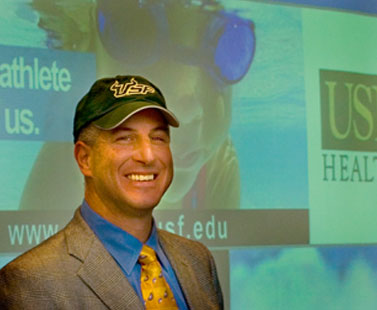
Dr. Robert Pedowitz
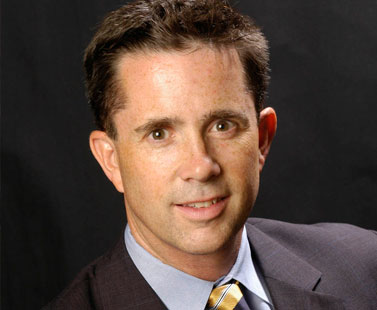
Dr. Charles Nofsinger
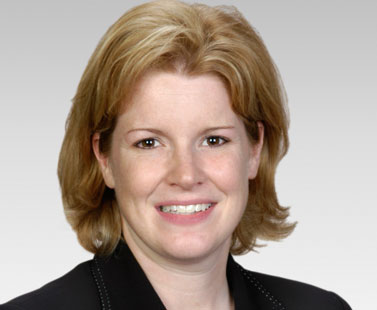
Dr. Michele Pescasio
Story by Lissette Campos and Anne DeLotto Baier
October 18 Final Game Score: USF 27 vs. Rutgers 30
Below: Links to more coverage
Bulls Featured in Sports Illustrated
Students to watch the Bulls en masse!

